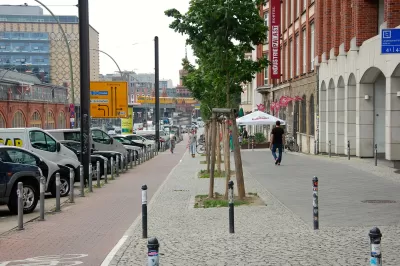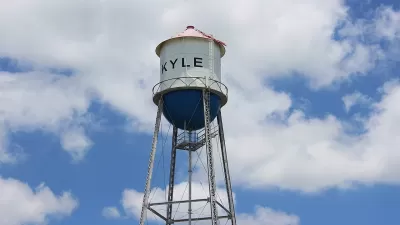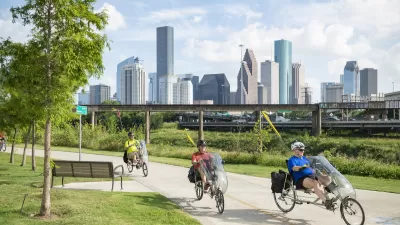Better safety and multimodal ease are not the only benefits offered by complete streets. According to this report, on the average they pay for themselves and then some.

Since the town of Normal in Illinois adopted a complete streets approach, business and walkability have skyrocketed. Laura Searfoss writes, "Today, more than 40 percent of all trips in Uptown Normal are by foot or bicycle. Since these improvements, it experienced a boost in retail sales (46 percent) and attracted more than $160 million in private investment." The Complete Streets project cost Normal $47 million.
While the safety and livability benefits of complete streets are intangible, redesign for multiple modes can also make sound business sense. A recent report from Smart Growth America makes the economic case for investment in complete streets. Arguments include:
- Safer streets protect human life, but they also save a city money: "Each collision that a safer street helps to avoid represents avoided costs from emergency room visits, hospital charges, rehabilitation, and doctor visits, as well as the cost of property damage."
- Complete streets, on average, don't strain public coffers: "The average cost of a project was just $2.1 million—far less than the $9 million average cost of projects in state transportation improvement plans."
- Arteries with complete streets engineering attract greater private investment, boosting tax revenue and land value.
FULL STORY: Complete Streets Are a Bargain

Manufactured Crisis: Losing the Nation’s Largest Source of Unsubsidized Affordable Housing
Manufactured housing communities have long been an affordable housing option for millions of people living in the U.S., but that affordability is disappearing rapidly. How did we get here?

Americans May Be Stuck — But Why?
Americans are moving a lot less than they once did, and that is a problem. While Yoni Applebaum, in his highly-publicized article Stuck, gets the reasons badly wrong, it's still important to ask: why are we moving so much less than before?

Research Shows More Roads = More Driving
A national study shows, once again, that increasing road supply induces additional vehicle travel, particularly over the long run.

Judge Halts Enforcement of Anti-Homeless Laws in Grants Pass
The Oregon city will be barred from enforcing two ordinances that prosecute unhoused residents until it increases capacity and accessibility at designated camping sites.

Advancing Sustainability in Los Angeles County Schools
The Los Angeles County Office of Education’s Green Schools Symposium brings together educators, students, and experts to advance sustainability in schools through innovative design, climate resilience strategies, and collaborative learning.

Using Old Oil and Gas Wells for Green Energy Storage
Penn State researchers have found that repurposing abandoned oil and gas wells for geothermal-assisted compressed-air energy storage can boost efficiency, reduce environmental risks, and support clean energy and job transitions.
Urban Design for Planners 1: Software Tools
This six-course series explores essential urban design concepts using open source software and equips planners with the tools they need to participate fully in the urban design process.
Planning for Universal Design
Learn the tools for implementing Universal Design in planning regulations.
City of Moreno Valley
Institute for Housing and Urban Development Studies (IHS)
City of Grandview
Harvard GSD Executive Education
NYU Wagner Graduate School of Public Service
City of Cambridge, Maryland
Newport County Development Council: Connect Greater Newport





























